site search
online catalog
VERY GOOD LOOKING HARPERS FERRY 1816 TYPE-I MUSKET DATED 1820

Hover to zoom

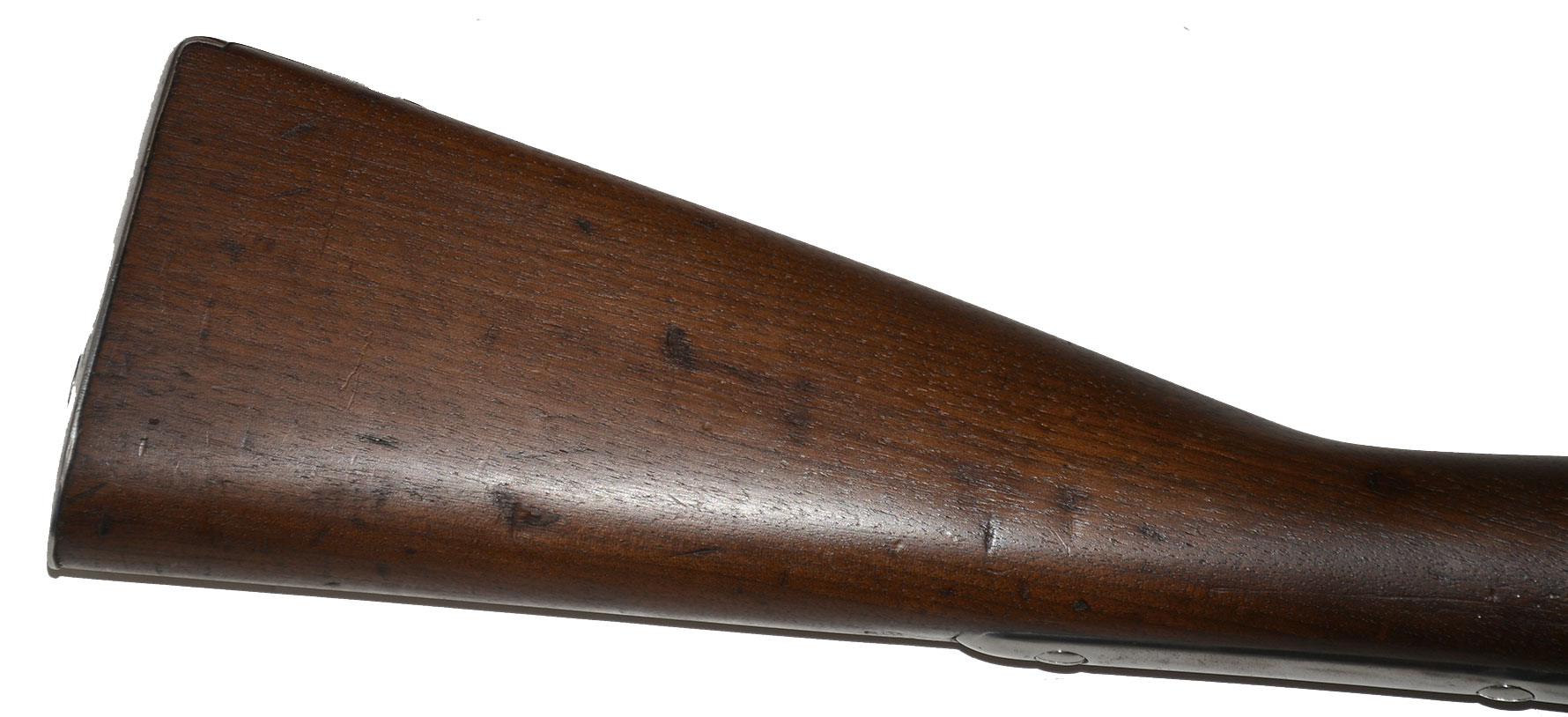
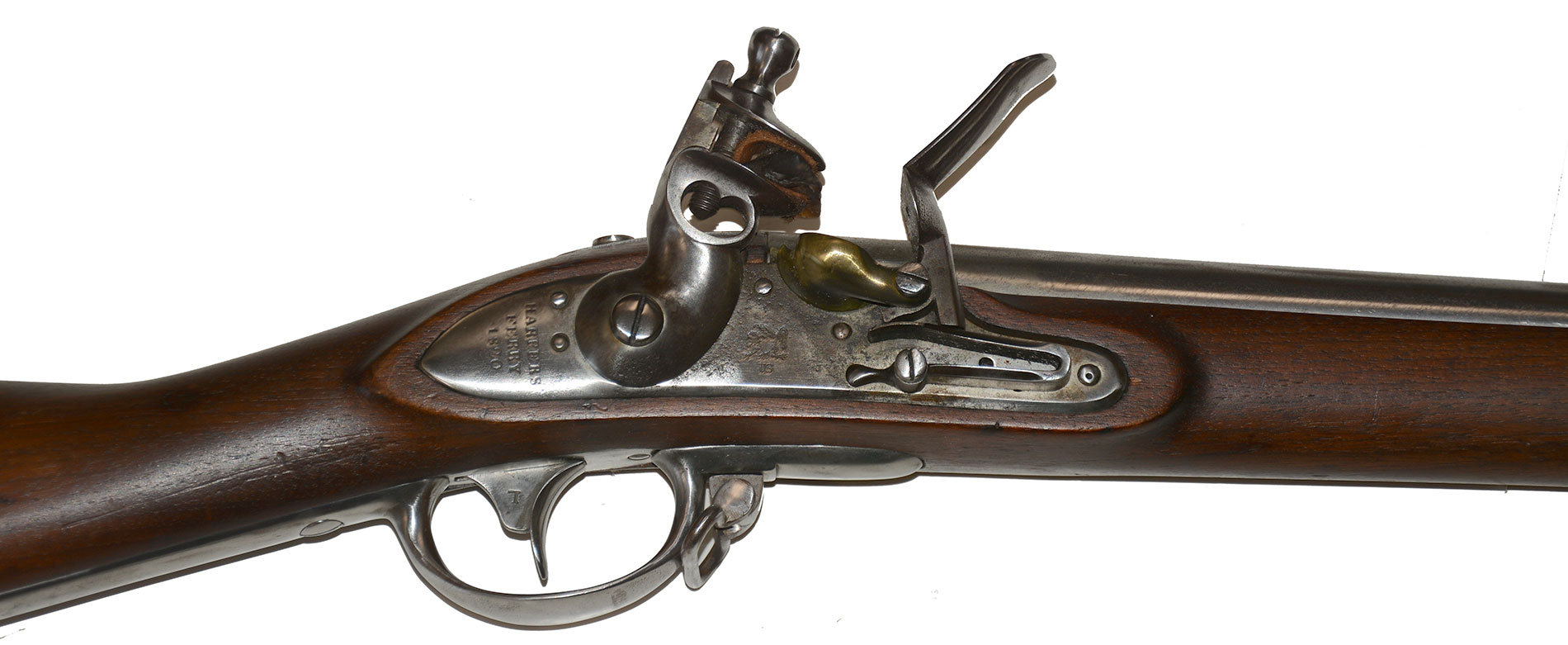


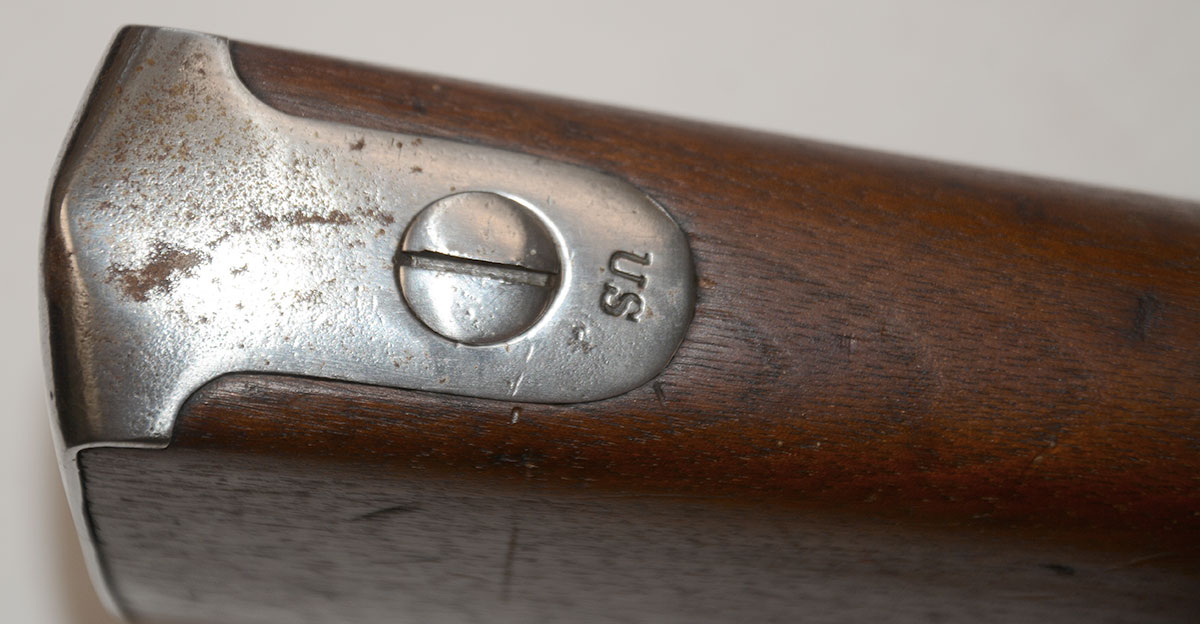

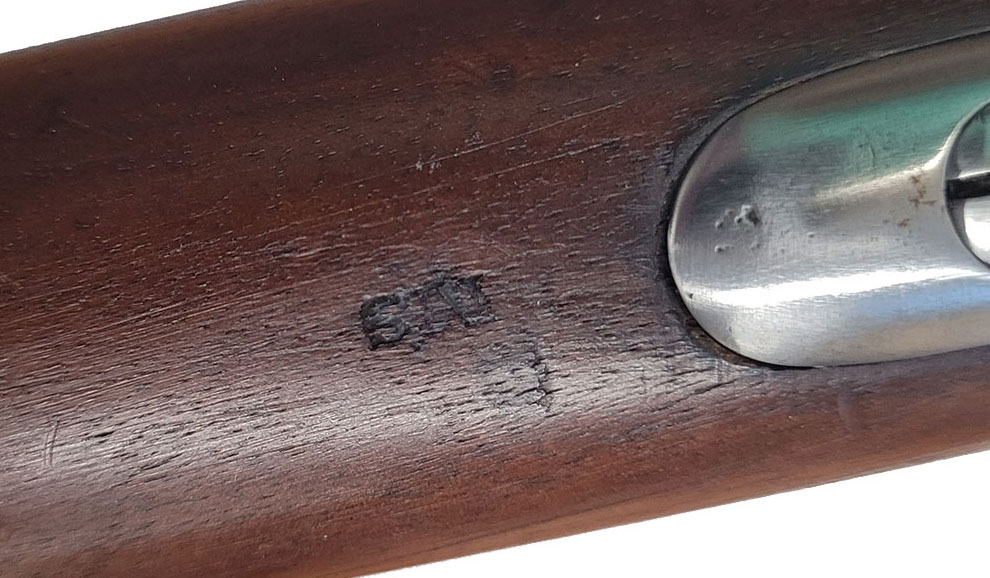
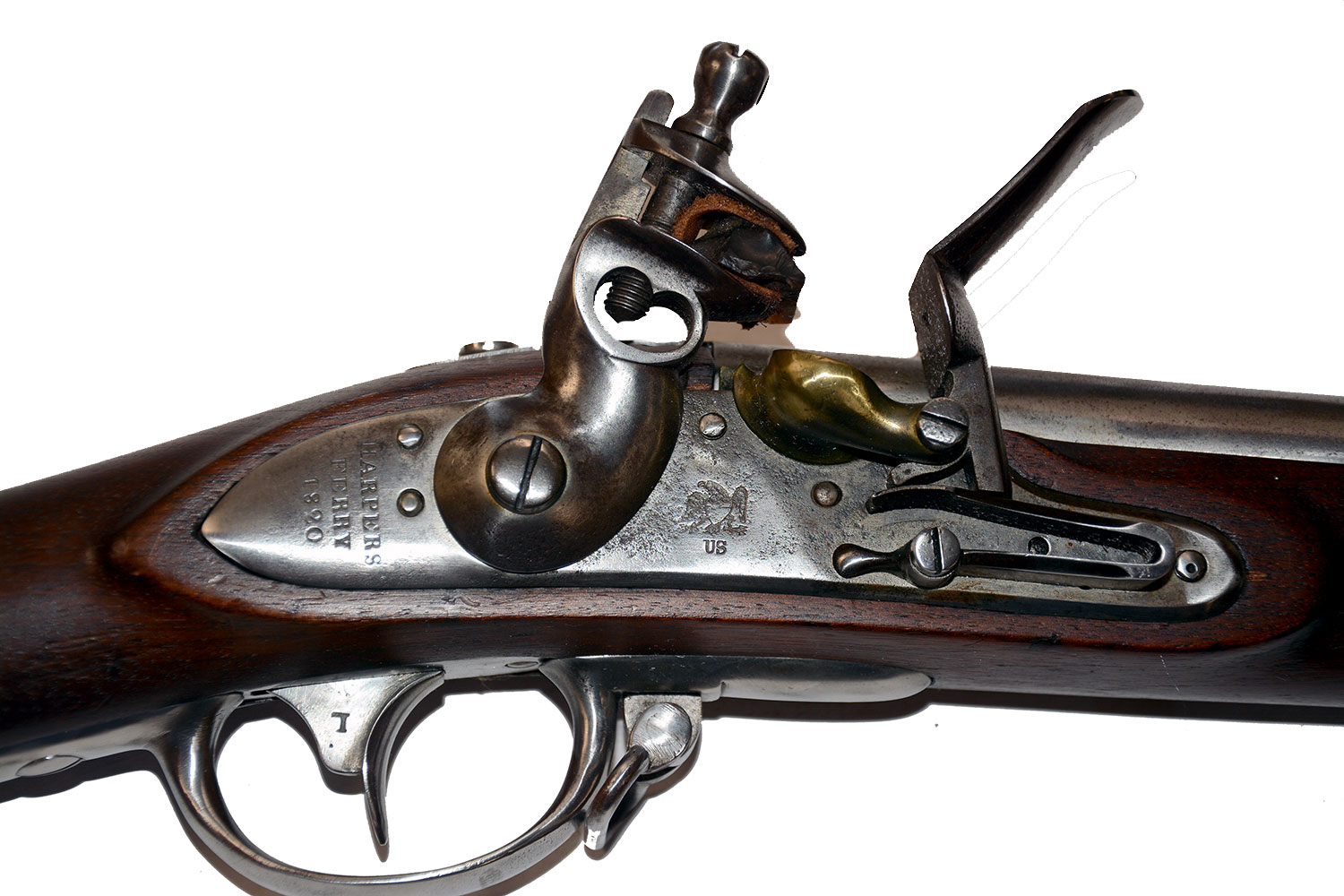
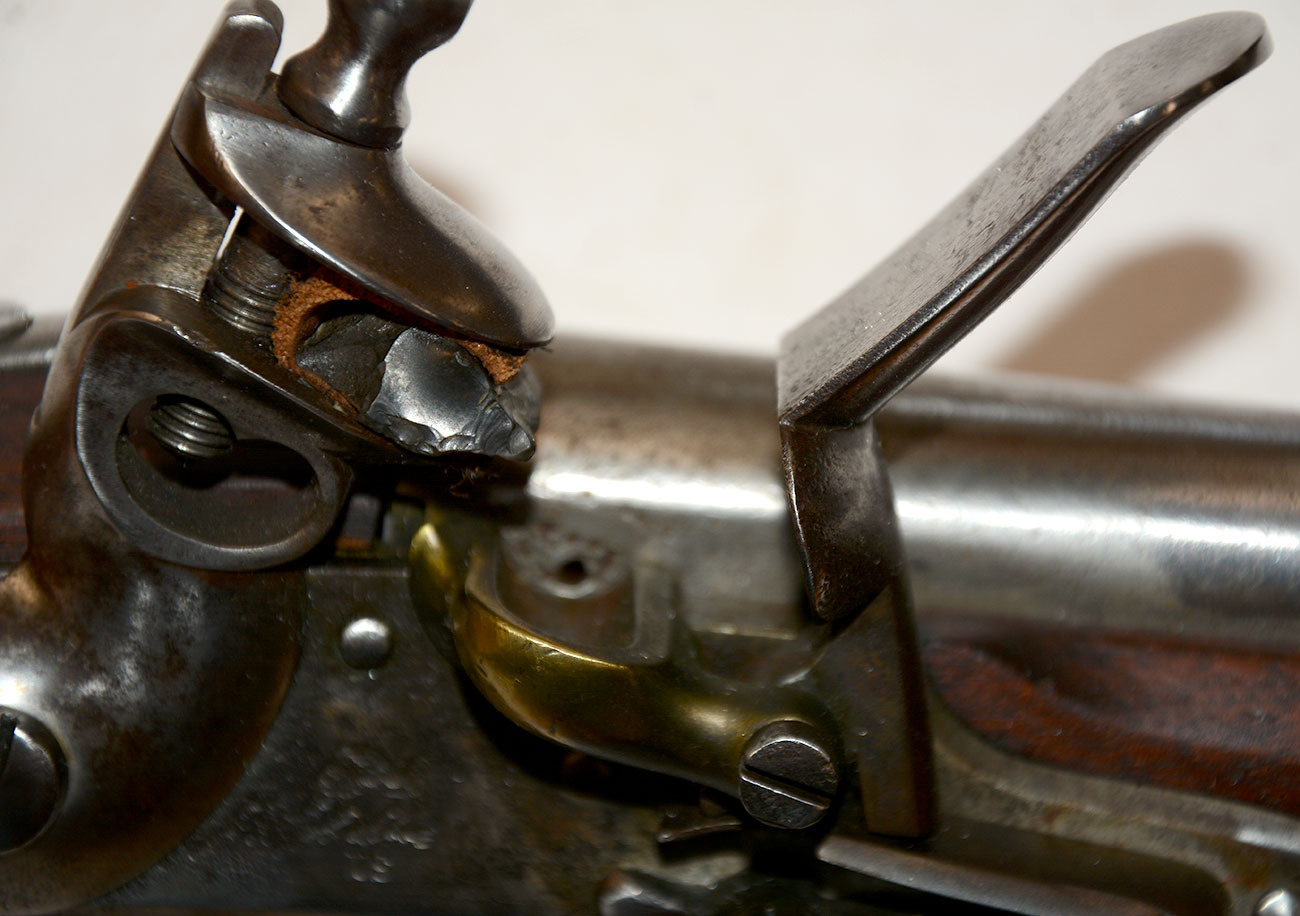

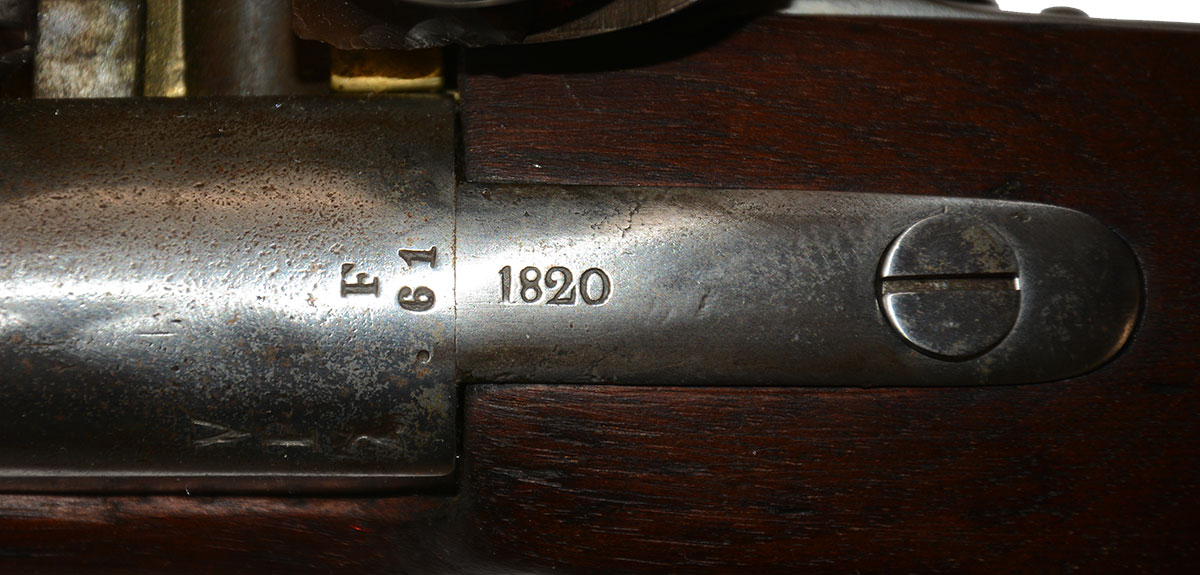
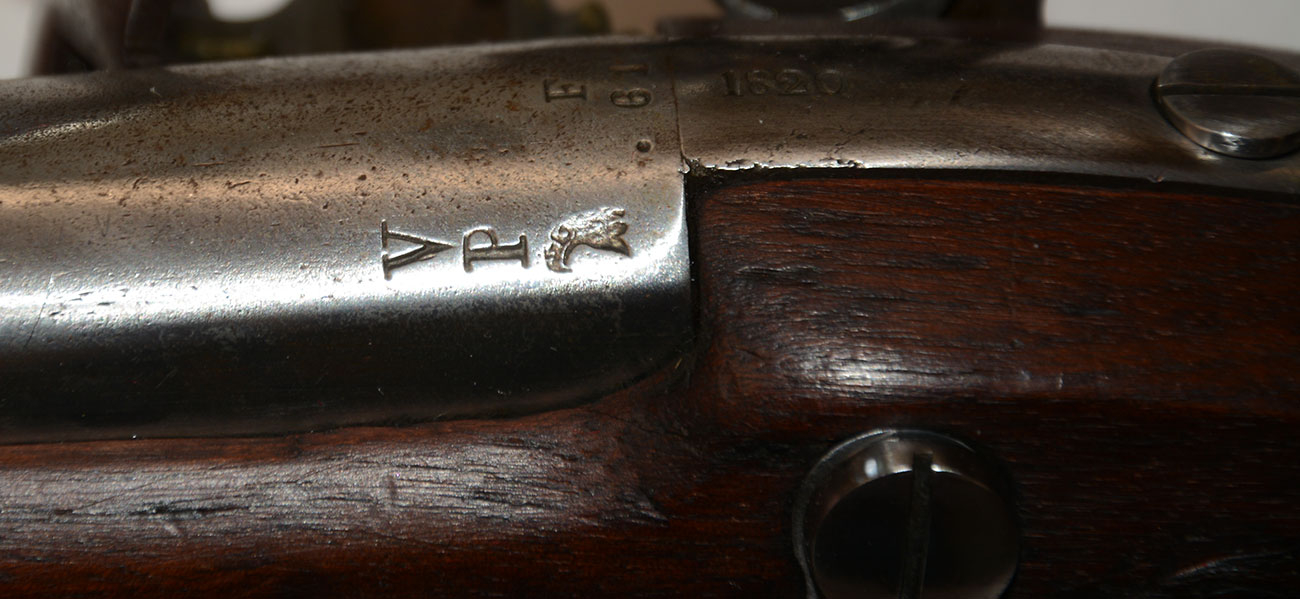

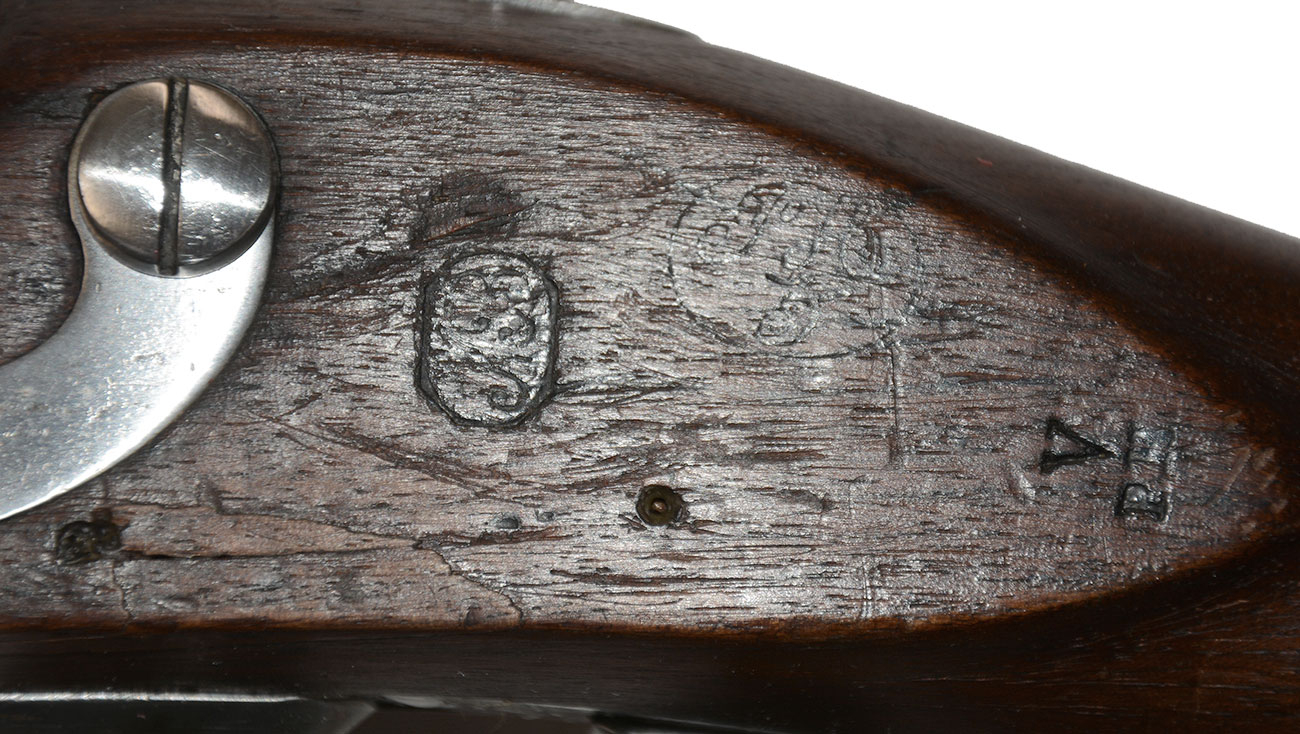
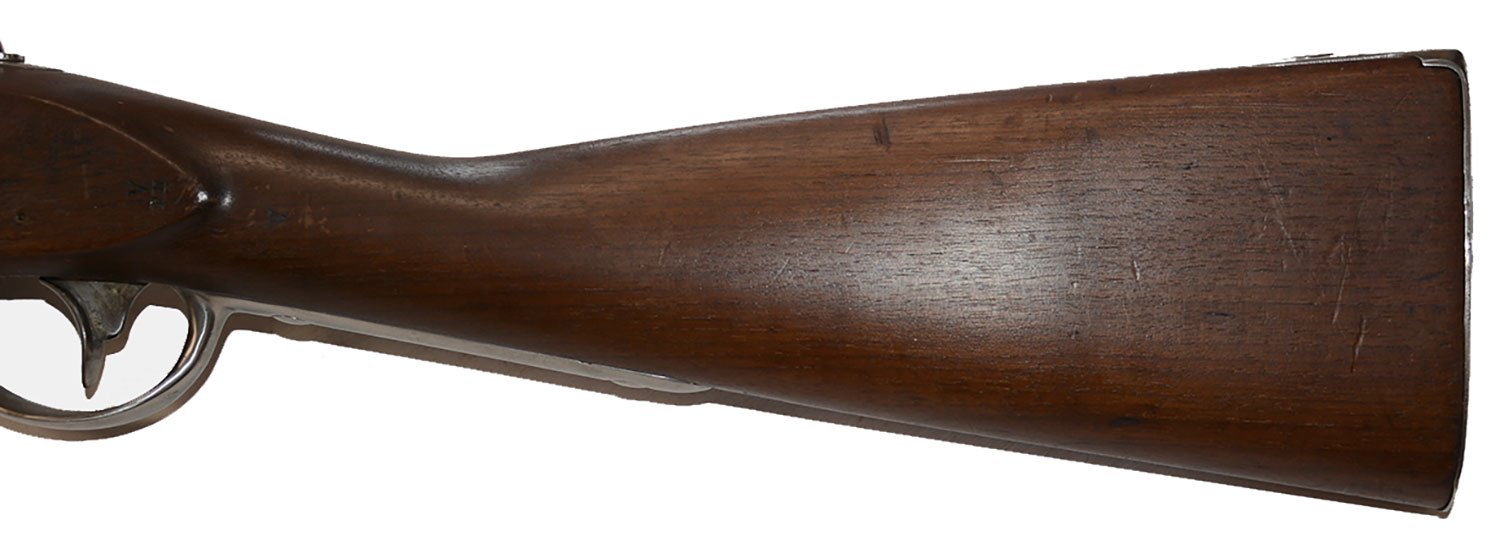
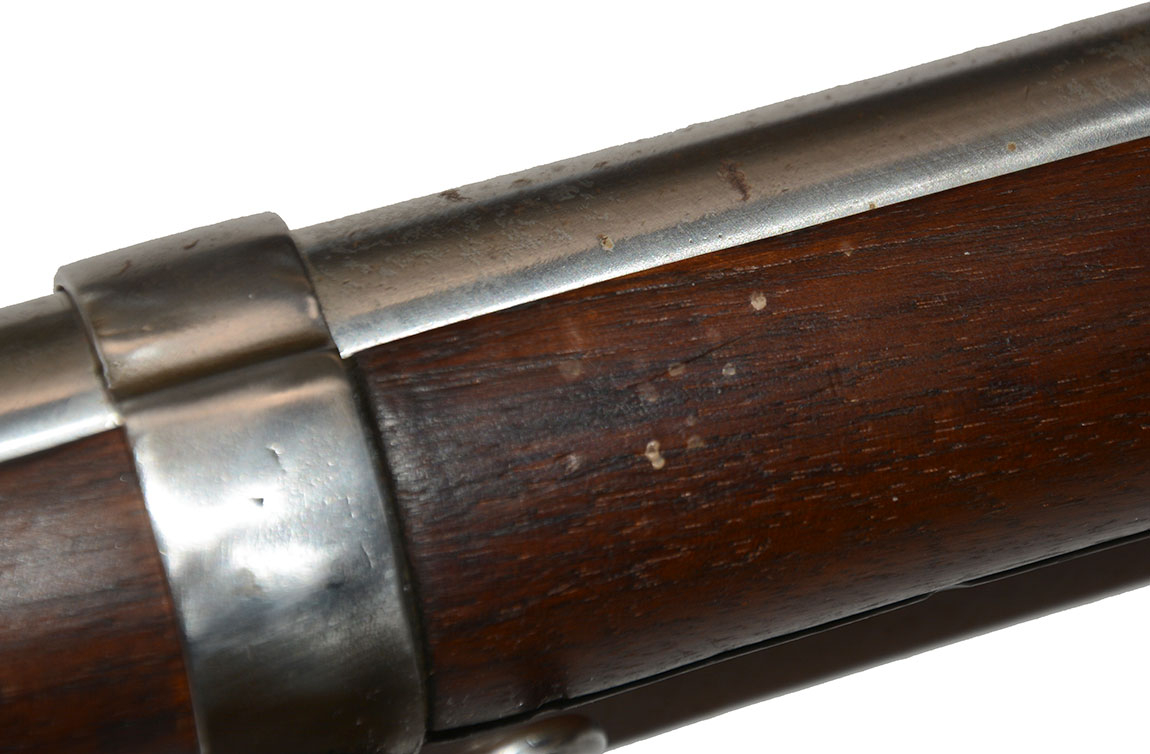
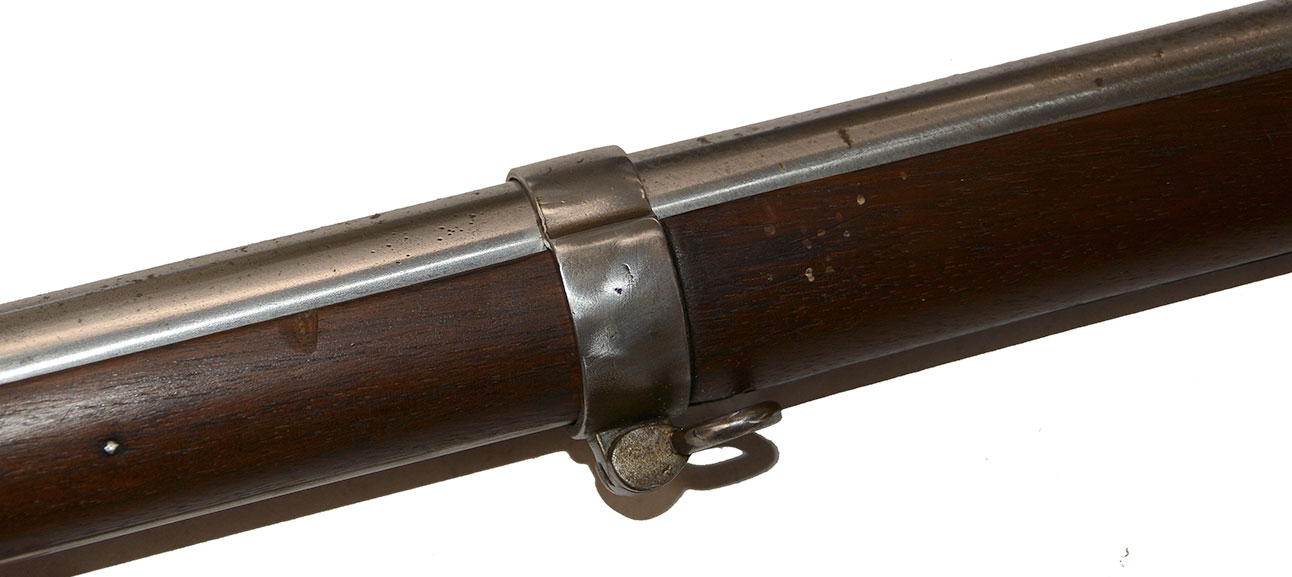

$3,750.00 SOLD
Quantity Available: None
Item Code: 2025-279
This is very good example of a Harpers Ferry Type-I Model 1816 infantry musket in original flint and made in 1820, the second year of production for these muskets at that national armory, which made just 5 pattern guns in 1816, 6 in 1817, none in 1818, then 3,020 in 1819 and 9,856 in 1820 according to Moller. The musket is full-length, all original, and complete with all barrel bands, springs, swivels, front sight, bayonet stud, and ramrod in place. The wood to metal fit is tight. The bore is bright and clean. The mechanics are good. The Type-I is characterized by placement of the rear sling swivel on a stud passing upward through the triggerguard extension in front of the triggerguard bow, and usually by an armory bright finish. This has been very carefully cleaned to reflect that, at the same time preserving the crisp markings in the metal, very good edges and visible cartouches in the wood as well.
The barrel is generally smooth metal overall, showing just some small gray spotting and very fine, shallow salt-and-peppering on the barrel and bands. The lock plate is stamped HARPERS / FERRY / 1820 in three lines behind the hammer and bears a Harpers Ferry style eagle over “US” on the lower half of the plate between the hammer and the brass pan. The plate is bright, matching the other metal though shows some gray freckling forward of the hammer affecting slightly the left wing of the eagle. The breechplug tang is dated 1820, matching the lock. The left breech of the barrel shows deeply stamped barrel proofs: V/P/ [eaglehead] and at center is the alphanumeric code “F/61,” characterized by some as a serial number and others as a predetermined rack number. (For the controversy and differing explanations of the system and sequence of markings we refer the sleepless to Moller, Schmidt, and others.) The triggerguard and buttplate are both smooth metal, also in the bright, with a few gray stains, with the trigger and triggerguard bow clearly stamped with an “L” and buttplate crisply stamped “US.” The screw slots overall are very good. The wood shows as a pleasing, warm brown overall with a tight fit to the lock, sideplate, breechplug tang, triggerguard, buttplate and all other metal parts. The edges to the lockplate apron and the counterpane are sharp. The stock shows the correct low comb typical of this pattern. The butt flats show just minor handling marks, scratches or dark spots. The ramrod channel is very good down to the lower section where it shows some wear just above the entry point at the lower band, a pretty typical spot where the ramrod might strike the sides in being replaced.
The wood has three stamps on the counterpane and one at rear of the triggerguard. Stamped vertically at rear of the counter pane is the clear V/PH mark of Philip Hoffman, who is listed as a stocker at Harpers Ferry in 1861 and by 1823 was an inspector of stocked arms. Just aft of the rear lock screw is the slightly rubbed script “AB” cartouche of Armistead Beckham, who started working at Harpers Ferry about 1805, was appointed master armorer Dec. 9, 1815, and enjoyed a reputation as of somewhat dubious character. To rear of his mark is a larger, more worn, script classification mark applied in the 1840s when the musket was among flintlock arms inspected or for possible conversion to percussion. This is rubbed but appears to be a script “TA” over a “3” which was the default classification for all longarms dating 1812 t0 1820 inclusive. We have not identified the inspector, and could be misreading the script, but these inspectors were reportedly drawn from workers at the various arsenals visited by a supervisory team. Daum and Pate illustrate a simple, unidentified script A, but we do not see any similar letter combination in this context. Just behind the triggerguard are small, somewhat dark, block letter initials that seem to be “MS,” “AIS” or something similar, but bets are still being taken.
This is a very good looking Harpers Ferry Model 1816. [sr][ph:L]
DISCLAIMER: All firearms are sold as collector's items only - we do not accept responsibility as to the shooting safety or reliability of any antique firearm. All firearms are described as accurately as possible, given the restraints of a catalog listing length. We want satisfied customers & often "under" describe the weapons. Any city or state regulations regarding owning antique firearms are the responsibility of the purchaser. All firearms are "mechanically perfect" unless noted, but again, are NOT warranted as safe to fire!
~~~~~~~~~~~~~~~~~~~~~~~~~~~~~~~~~~~
THIS ITEM, AS WITH ALL OTHER ITEMS AVAILABLE ON OUR WEB SITE,
MAY BE PURCHASED THROUGH OUR LAYAWAY PROGRAM.
CLICK HERE FOR OUR POLICIES AND TERMS.
THANK YOU!
Inquire About VERY GOOD LOOKING HARPERS FERRY 1816 TYPE-I MUSKET DATED 1820
Most Popular
Historical Firearms Stolen From The National Civil War Museum In Harrisburg, Pa »
Theft From Gravesite Of Gen. John Reynolds »
Selection Of Unframed Prints By Don Troiani »
Fine Condition Brass Infantry Bugle Insignia »
British Imported, Confederate Used Bayonet »
Scarce New Model 1865 Sharps Still In Percussion Near Factory New »
featured item
US MODEL 1860 AMES CAVALRY OFFICER’S SABER WITH WOOD LINED STEEL SCABBARD
Manufactured: Chicopee, Mass. Maker: Ames Mfg. Co. Year: Civil War Model: M1860 Size: 35 inch blade Condition: Excellent+ This regulation M1860 Cavalry Officer has the decorated guard with the eagle, decorated branches and pommel. The grip is… (870-122). Learn More »


